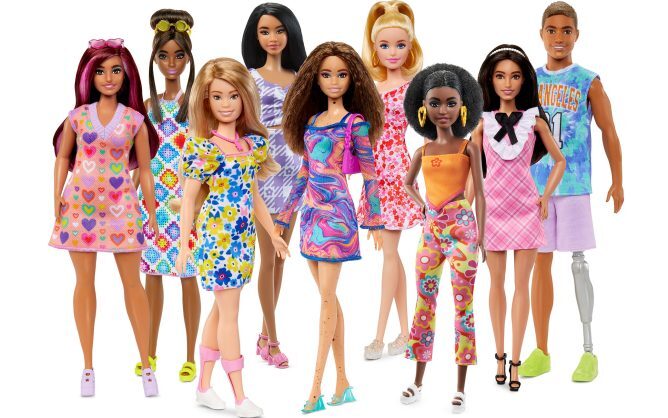by Kris Unise
Share
by Kris Unise
Share

As part of a push to diversify, a Barbie doll with Down syndrome is hitting the market.
The new doll is modified to have a shorter frame and longer torso, according to Mattel, the company behind Barbie. Her face has a rounder shape, smaller ears, a flat nose bridge and eyes that are somewhat slanted and almond shaped. In addition, Barbie’s palms have a single line, as is often the case for those with Down syndrome.
Mattel said it worked with the National Down Syndrome Society to create the new doll. Individuals with Down syndrome, siblings, parents and other stakeholders were consulted to ensure accuracy in Barbie’s representation of the chromosomal disorder. The company also indicated that a medical professional reviewed the doll’s physical features.
“Our goal is to enable all children to see themselves in Barbie, while also encouraging children to play with dolls who do not look like themselves. Doll play outside of a child’s own lived experience can teach understanding and build a greater sense of empathy, leading to a more accepting world,” said Lisa McKnight, executive vice president and global head of Barbie and dolls at Mattel. “We are proud to introduce a Barbie doll with Down syndrome to better reflect the world around us and further our commitment to celebrating inclusion through play.”
In addition to adjusting Barbie’s physical features, the doll’s clothing is yellow and blue with butterflies, symbols and colors associated with Down syndrome, Mattel noted. And, Barbie wears a pendant necklace with three upward chevrons to represent the three copies of the 21st chromosome present in those with Down syndrome.
Barbie also has pink ankle foot orthotics since some children with Down syndrome need this type of support. The orthotics were designed to complement Barbie’s outfit and are modeled after real ones provided by the National Down Syndrome Society, Mattel said.
“This means so much for our community, who for the first time, can play with a Barbie doll that looks like them,” said Kandi Pickard, president and CEO of the National Down Syndrome Society. “This Barbie serves as a reminder that we should never underestimate the power of representation. It is a huge step forward for inclusion and a moment that we are celebrating.”
The new doll is part of Barbie’s Fashionistas line, a collection aimed at promoting inclusivity. The lineup includes more than 175 different looks with various skin tones, eye colors, hair colors and textures, body types and disabilities.
Previously, the Barbie Fashionistas line has offered up a Barbie that uses a wheelchair and dolls with hearing aids, vitiligo, alopecia and a prosthetic limb.
The limited-run Barbie with Down syndrome is available online now and it will be at major retailers this summer and fall for $10.99.
STAY IN THE LOOP







